László Lakner. Spuren
23 May to 27 June 2015 ⟶ Corneliusstraße
Exhibition view
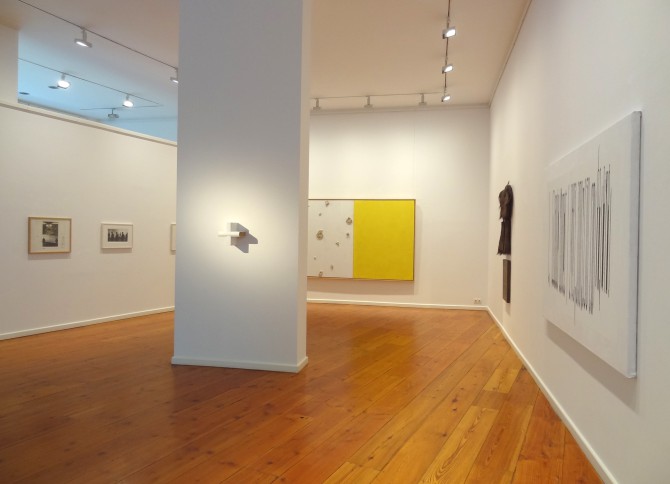
Exhibition view
Stones from Netanya, 1996, stones/oil/canvas, 170 x 260 cm
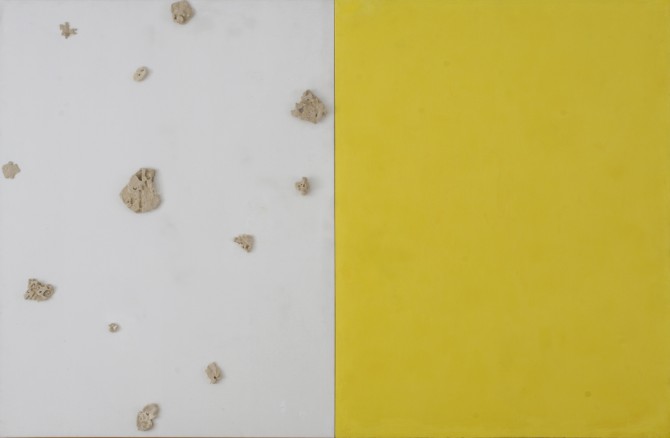
Stones from Netanya, 1996, stones/oil/canvas, 170 x 260 cm
Cross Book (Hommage à Tatlin), 1986, book/wood/oil, 24.5 x 18 cm
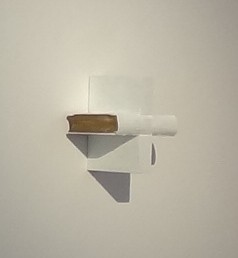
Cross Book (Hommage à Tatlin), 1986, book/wood/oil, 24.5 x 18 cm
Exhibition view
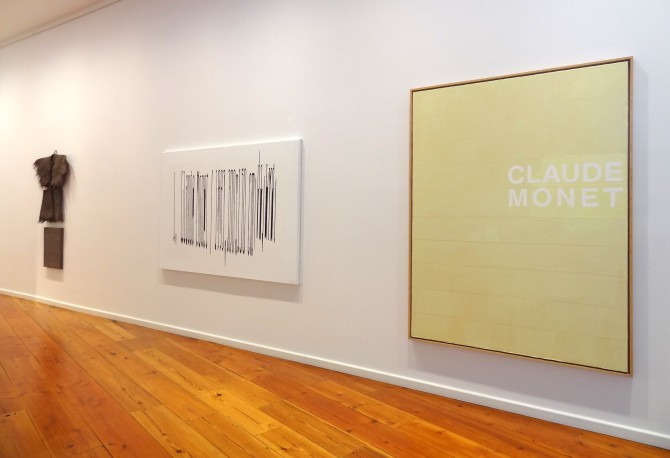
Exhibition view
Claude Monet, 1993, oil/acrylic/canvas, 141 x 210 cm
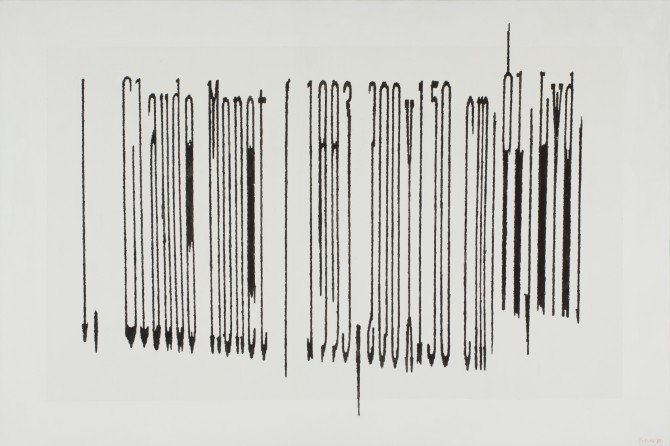
Claude Monet, 1993, oil/acrylic/canvas, 141 x 210 cm
Claude Monet, 1993, oil/canvas, 200 x 150 cm

Claude Monet, 1993, oil/canvas, 200 x 150 cm
Chinese Lesson, 2000, installation Chinese mackintosh, 110 x 100 x 2 cm, oil/canvas, 60 x 50 cm
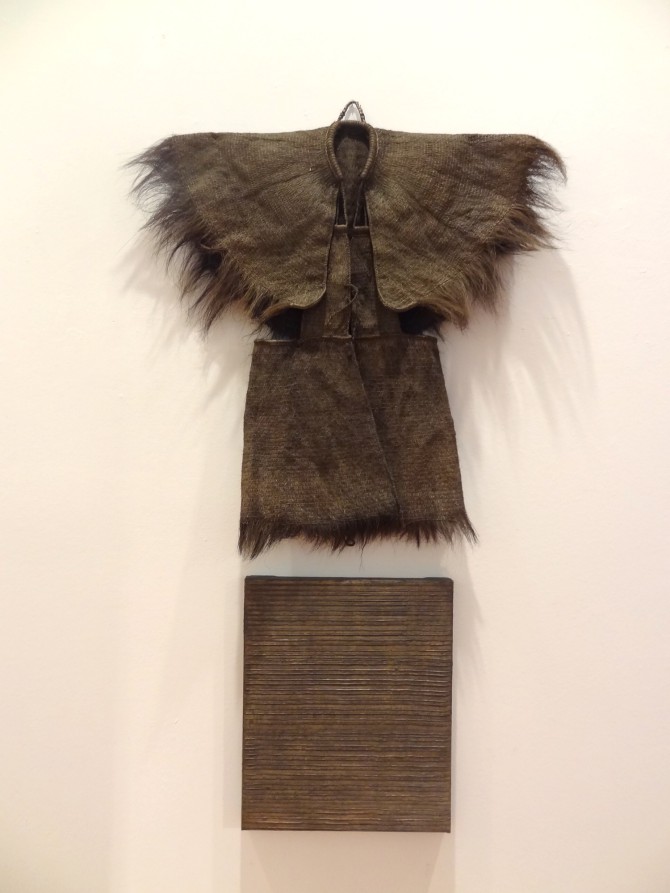
Chinese Lesson, 2000, installation Chinese mackintosh, 110 x 100 x 2 cm, oil/canvas, 60 x 50 cm
Exhibition view
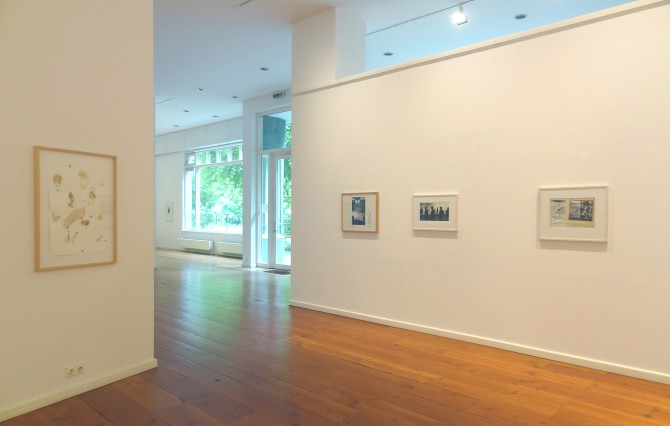
Exhibition view
left: Parallaxis. Hommage à Kopernikus, 1972, silkscreen/paper, 41 x 43 cm
right: Hommage à Kopernikus, 1972, collage/photography/paper, 21 x 39 cm
right: Hommage à Kopernikus, 1972, collage/photography/paper, 21 x 39 cm
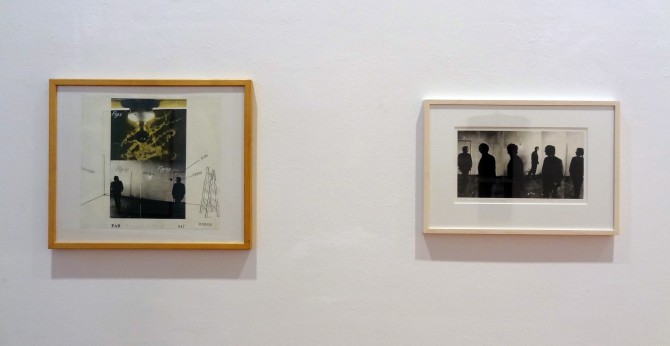
left: Parallaxis. Hommage à Kopernikus, 1972, silkscreen/paper, 41 x 43 cm
right: Hommage à Kopernikus, 1972, collage/photography/paper, 21 x 39 cm
right: Hommage à Kopernikus, 1972, collage/photography/paper, 21 x 39 cm
Moon Diary, 1970, collage/felt-tip pen/paper, 28 x 39.5 cm
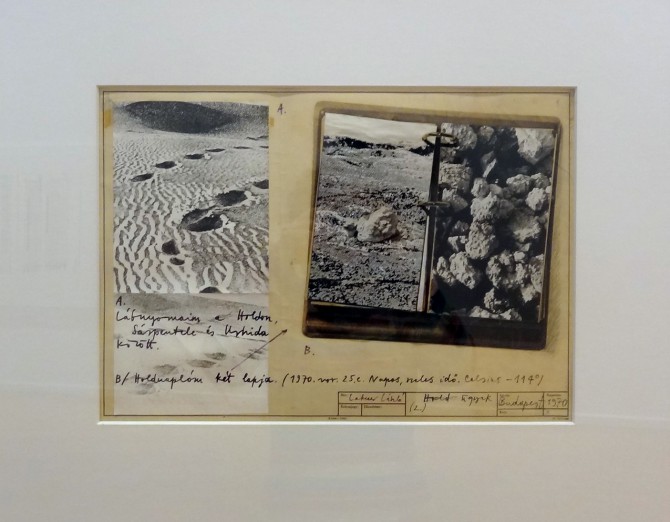
Moon Diary, 1970, collage/felt-tip pen/paper, 28 x 39.5 cm
Exhibition view
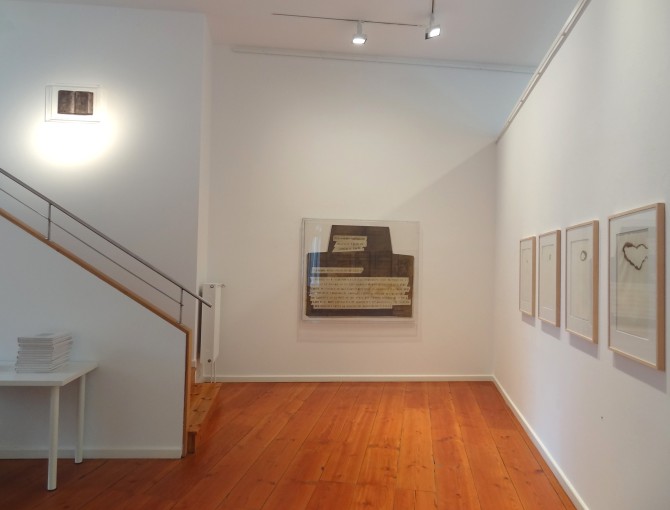
Exhibition view
Joan Miro's telegram on the death of André Breton, 1973, oil/canvas, 130 x 150 cm
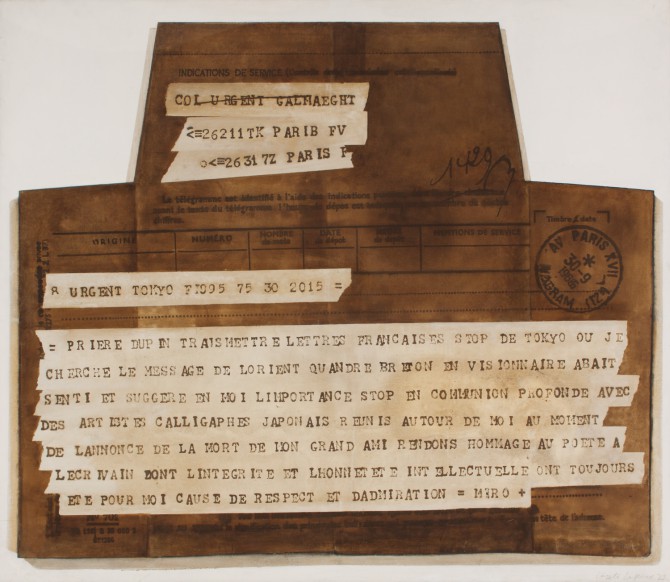
Joan Miro's telegram on the death of André Breton, 1973, oil/canvas, 130 x 150 cm
Burning. Drawing series (in four parts), 1972 1-3. mixed media/paper 4. burnt paper each 485 × 345 mm
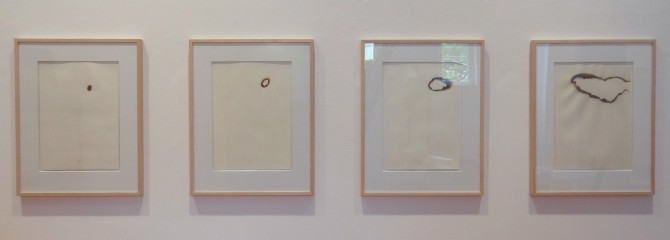
Burning. Drawing series (in four parts), 1972 1-3. mixed media/paper 4. burnt paper each 485 × 345 mm
Exhibition view
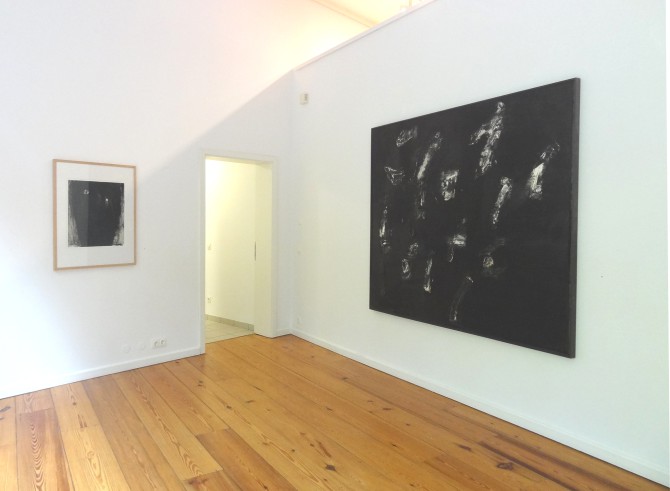
Exhibition view
Bones, 1987, oil/canvas, 198 x 170 cm
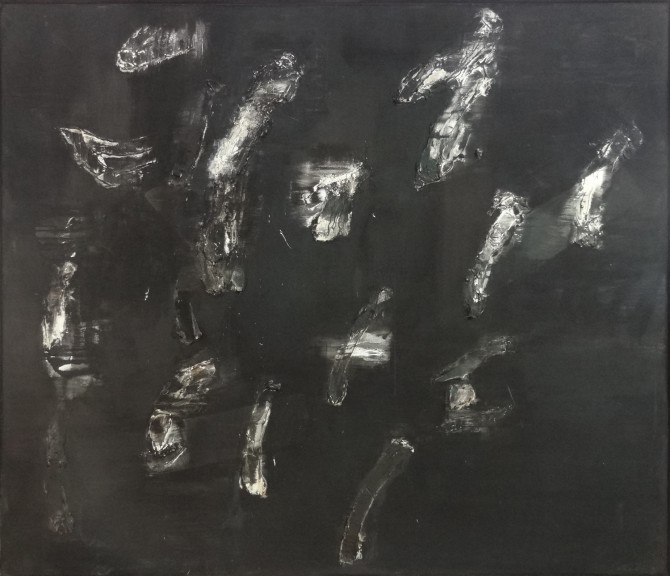
Bones, 1987, oil/canvas, 198 x 170 cm
Exhibition view
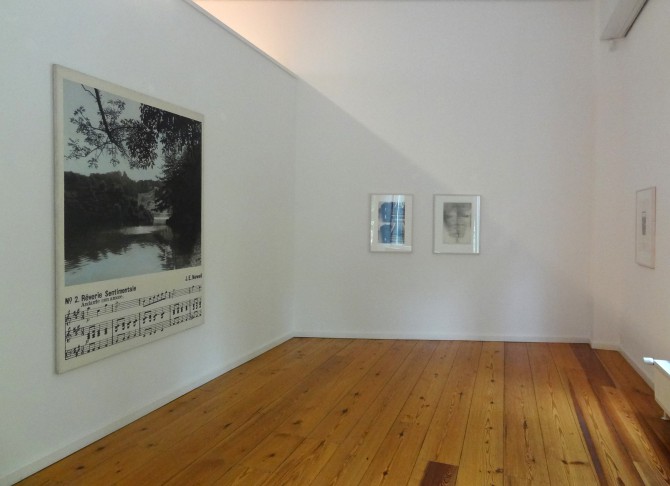
Exhibition view
Paintings - Drawings - Conceptual Works
László Lakner is known in Hungary above all as a classic of figurative painting and conceptual art, as a subversive figure of the neo-avant-garde. He created a progressive alternative to the indoctrinated form of realism in the field of figuration. He is still considered a central figure of the new figuration: this figuration is as much connected to the tradition of surrealism as it is to the contemporary tendencies of pop art and photorealism. Lakner's critical realism also reflected the problematic legacy of socialist realism. Lakner's historical and political sensitivity and self-reflexivity are of central importance in the history of post-war Hungarian art. In contrast, he is best known in Germany as an important representative of Informel and scriptural painting who explores the ontology of writing in his painterly-sensitive paintings. The Telegram painting is one of Lakner's first "pure" scriptural paintings, yet on the other hand it is an example of the history-conscious realism in the artist's work, it represents a final phase of his Hungarian period, and introduces the Pseudo-Facsimile Manuscript and Document paintings, the first series Lakner created in Germany. The exhibition "Traces" explores the dual character of Lakner's oeuvre by juxtaposing important exhibits of his early Hungarian work with works already created in Germany. The exhibition addresses the recurring question of leaving traces in László Lakner's oeuvre. The trace as imprint, the trace as painterly gesture, the trace as a historical document, the trace as a system of signs, the trace as writing, as artefact, and as remnant of existence. It is about the dialectics of pictorial representation and the processuality of depiction. (Text: Dávid Fehér)
László Lakner is known in Hungary above all as a classic of figurative painting and conceptual art, as a subversive figure of the neo-avant-garde. He created a progressive alternative to the indoctrinated form of realism in the field of figuration. He is still considered a central figure of the new figuration: this figuration is as much connected to the tradition of surrealism as it is to the contemporary tendencies of pop art and photorealism. Lakner's critical realism also reflected the problematic legacy of socialist realism. Lakner's historical and political sensitivity and self-reflexivity are of central importance in the history of post-war Hungarian art. In contrast, he is best known in Germany as an important representative of Informel and scriptural painting who explores the ontology of writing in his painterly-sensitive paintings. The Telegram painting is one of Lakner's first "pure" scriptural paintings, yet on the other hand it is an example of the history-conscious realism in the artist's work, it represents a final phase of his Hungarian period, and introduces the Pseudo-Facsimile Manuscript and Document paintings, the first series Lakner created in Germany. The exhibition "Traces" explores the dual character of Lakner's oeuvre by juxtaposing important exhibits of his early Hungarian work with works already created in Germany. The exhibition addresses the recurring question of leaving traces in László Lakner's oeuvre. The trace as imprint, the trace as painterly gesture, the trace as a historical document, the trace as a system of signs, the trace as writing, as artefact, and as remnant of existence. It is about the dialectics of pictorial representation and the processuality of depiction. (Text: Dávid Fehér)